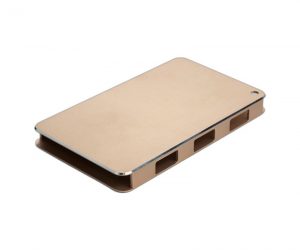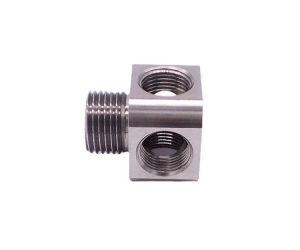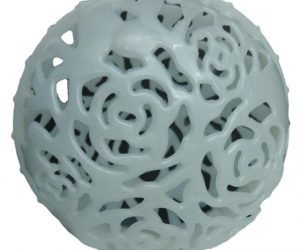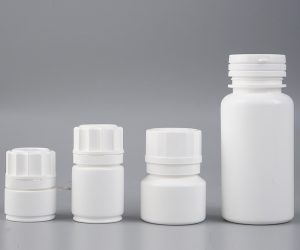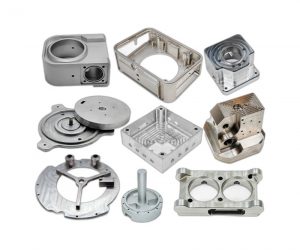The application of Computer Numerical Control (CNC) machining in the medical sector transcends mere precision engineering; it represents a paradigm shift in healthcare delivery, impacting everything from surgical accuracy to the very definition of personalized medicine. This impact is not merely incremental; it's a disruptive force, constantly reshaping the landscape of patient care.
I. The Genesis of Algorithmic Anatomy:
A. Beyond the Artisan: A Technological Paradigm Shift: The evolution of medical device manufacturing transcends mere incremental improvement; it represents a fundamental paradigm shift. No longer constrained by the limitations of hand-crafted precision, the healthcare industry has embraced the deterministic power of Computer Numerical Control (CNC) machining, ushering in an era of unprecedented accuracy and reproducibility. This transition signifies a profound departure from the inherently variable nature of traditional methods, yielding a new standard of quality and safety.
B. The Imperative of Inherent Accuracy: In the high-stakes environment of healthcare, where margins for error are vanishingly small, the demand for unwavering precision is not merely desirable—it's existential. The efficacy, and indeed the safety, of medical devices hinges upon the absolute fidelity of their design and manufacture. CNC machining, with its capacity for sub-micron accuracy and consistent repeatability, directly addresses this critical need, enabling the creation of devices that meet the most stringent performance and safety criteria.
II. Deconstructing the Algorithmic Process:
A. The Dance of Bits and Blades: CNC machining is far more than a simple subtractive manufacturing process; it's a sophisticated interplay of algorithms, high-speed tooling, and advanced materials science. Through the precise translation of digital design files into coordinated machine movements, CNC machines sculpt complex geometries from a diverse array of biocompatible materials, achieving levels of intricacy and precision previously unattainable. This deterministic process minimizes human error, ensuring consistent quality across large production runs.
B. Biocompatibility and Beyond: The Material Imperative: The adaptation of CNC machining for medical applications necessitates a rigorous selection of materials. Biocompatibility, sterility, and long-term durability are paramount considerations. The process extends beyond mere material selection; it involves meticulous surface finishing techniques to minimize friction, corrosion, and the potential for adverse biological reactions. This necessitates a deep understanding of both material science and the complex biological interactions within the human body.
III. Applications: A Tapestry of Precision:
A. The Surgical Suite Reimagined: The impact of CNC machining on surgical instrumentation is transformative. From minimally invasive tools requiring exquisite dexterity to complex orthopedic implants demanding exceptional strength and biointegration, CNC-machined components are indispensable. The precision afforded by this technology allows for more intricate procedures, smaller incisions, faster recovery times, and ultimately, improved patient outcomes.
B. Prosthetics: Bridging the Gap Between Biology and Technology: The field of prosthetics benefits profoundly from CNC machining's capacity for customization. The creation of personalized prosthetic limbs, tailored to the unique anatomical features and functional requirements of each patient, represents a significant advancement in restorative medicine. This level of personalization enhances both the functionality and the aesthetic integration of prosthetic devices, significantly improving patients' quality of life.
C. Dental Precision: A Smile Redefined: The application of CNC machining in dentistry extends beyond mere fabrication; it represents a paradigm shift towards personalized oral healthcare. The creation of custom-fit dental implants, orthodontic appliances, and other restorative components ensures superior fit, enhanced aesthetics, and improved patient comfort, leading to more predictable and successful treatment outcomes.
D. Beyond the Standardized: The Dawn of Personalized Medicine: The true potential of CNC machining lies in its capacity for personalized solutions. This technology empowers healthcare providers to design and manufacture bespoke medical devices tailored to the unique needs of individual patients, moving beyond the limitations of standardized, "one-size-fits-all" approaches. This represents a significant step towards the realization of truly personalized medicine. The implications are profound, promising a future where medical interventions are not only more effective but also profoundly more humane.
IV. Navigating the Bio-Medical Interface: A Complex Equation of Safety and Precision
A. Biocompatibility: Beyond Material Selection – A Systemic Approach: The biocompatibility of CNC-machined medical devices is not simply a matter of selecting inert materials; it demands a holistic understanding of material degradation, surface interactions at a cellular level, and the potential for immunological responses. This necessitates a multi-disciplinary approach, integrating material science, immunology, and advanced bio-testing protocols far beyond conventional standards. Failure to account for the intricate interplay of these factors can lead to catastrophic consequences, underscoring the critical nature of this phase.
B. Sterility: A Fortress Against Contamination: The sterile environment surrounding CNC machining for medical applications is not a suggestion; it's a non-negotiable imperative. Contamination control extends beyond the immediate manufacturing process, encompassing the entire supply chain, from raw material sourcing to final product sterilization. This necessitates the implementation of advanced cleanroom technologies, rigorous validation protocols, and a comprehensive understanding of microbial dynamics to ensure absolute sterility. Compromise is unacceptable.
C. Regulatory Compliance: A Labyrinth of Standards and Scrutiny: Navigating the regulatory landscape for medical device manufacturing is akin to traversing a complex labyrinth. Adherence to standards like ISO 13485 and FDA regulations is not merely a box-ticking exercise; it's a continuous process of rigorous documentation, validation, and auditing. The stakes are high; non-compliance can result in devastating consequences, including product recalls, legal ramifications, and, most critically, patient harm.
V. Redefining Patient Care: Precision, Personalization, and Velocity
A. Surgical Precision: Beyond the Scalpel's Reach: CNC machining has propelled surgical accuracy to unprecedented levels. The creation of highly intricate surgical instruments and implants, with tolerances measured in micrometers, allows for minimally invasive procedures, reduced trauma, and significantly improved patient outcomes. This translates to shorter recovery times, reduced hospital stays, and an enhanced quality of life for patients.
B. Personalized Prosthetics: Bridging the Gap Between Technology and Humanity: The ability to create bespoke prosthetic limbs and orthotic devices represents a profound advancement in assistive healthcare. CNC machining allows for the seamless integration of technology with the patient's unique anatomy, resulting in prosthetics that are not only functional but also aesthetically pleasing and comfortable. This personalization transforms prosthetics from mere functional replacements into extensions of the self.
C. Emergency Response: Speed as a Life-Saving Factor: In emergency situations, the speed and efficiency of CNC machining can be the difference between life and death. The rapid prototyping and production of critical medical components, such as custom splints or emergency prosthetics, allows for immediate intervention, minimizing patient suffering and maximizing survival rates. This capability transforms CNC machining into a crucial tool in trauma care.
VI. The Future of the Algorithmic Scalpel: Convergence and Innovation
A. Additive Manufacturing Synergy: A Powerful Convergence: The integration of additive manufacturing (3D printing) with CNC machining represents a potent synergy. This combination allows for the creation of complex, patient-specific medical devices with unparalleled precision and design flexibility, pushing the boundaries of personalized medicine.
B. Automation and Robotics: The Rise of the Intelligent Factory: The increasing automation and robotization of CNC machining processes enhances precision, consistency, and speed while mitigating human error. This not only improves the quality of medical devices but also enhances worker safety and productivity within the manufacturing environment.
C. Uncharted Territories: The Next Generation of Medical CNC: The future of medical CNC machining is brimming with potential. We can anticipate the emergence of intelligent, self-adapting CNC systems, the exploration of novel biocompatible materials, and the development of entirely new manufacturing techniques. This continuous evolution promises to further revolutionize healthcare, leading to even more precise, personalized, and efficient medical interventions.
VII. Ethical and Economic Paradoxes in CNC Medical Manufacturing
A. The Algorithmic Economy of Healthcare: A Cost-Benefit Calculus of Uncertainties.
The capital expenditure required for CNC machining in medical applications presents a formidable initial hurdle. However, the subsequent operational efficiencies—streamlined production, minimized material waste, and enhanced precision—generate a complex cost-benefit equation. While economies of scale promise increased accessibility and affordability, the inherent unpredictability of technological advancements and fluctuating material costs introduces significant uncertainty into this long-term projection. The true cost-effectiveness hinges not solely on immediate ROI, but on a nuanced understanding of evolving market dynamics and the potential for disruptive innovation.
B. The Ethical Labyrinth of Global Supply Chains: Navigating Sustainability and Social Responsibility.
The adoption of CNC machining necessitates a rigorous ethical audit throughout the entire manufacturing lifecycle. The sourcing of raw materials, often involving complex global supply chains, demands unwavering commitment to sustainable practices and the avoidance of exploitative labor conditions. Adherence to environmental regulations is not merely a compliance exercise, but a moral imperative, given the sensitive nature of medical devices and their impact on human health and the environment. The opacity inherent in many global supply chains presents a significant challenge to achieving true ethical transparency.
C. The Digital Divide in Healthcare: Bridging the Chasm of Global Access.
While CNC machining offers the potential for democratizing access to advanced healthcare, the reality is far more nuanced. The uneven distribution of technological infrastructure, coupled with persistent socioeconomic disparities, creates a digital divide that hinders equitable access. Empowering underserved regions requires a multifaceted approach extending beyond mere technological transfer; it demands robust training programs, sustainable infrastructure development, and the creation of supportive regulatory environments. The promise of universal access remains a complex aspiration, fraught with geopolitical and economic challenges.
VIII. Case Studies and the Evolving Narrative of Medical CNC Machining
A. Disruptive Innovation and the Redefinition of Medical Intervention: A Retrospective.
The transformative impact of CNC machining on medical device design is undeniable. From minimally invasive surgical instruments to personalized prosthetics, the precision and customization capabilities have redefined surgical possibilities and enhanced patient outcomes. However, a critical examination reveals that these advancements are not without their limitations. The narrative of progress must acknowledge the potential for unforeseen complications, the ethical implications of increasingly sophisticated technologies, and the ongoing need for rigorous clinical validation.
B. Industry Leaders and the Shifting Sands of Competitive Advantage:
Leading medical device manufacturers are increasingly leveraging CNC machining to gain a competitive edge. This integration, however, is not simply a matter of technological adoption; it requires a fundamental shift in organizational culture, encompassing design philosophy, manufacturing processes, and supply chain management. The success stories often mask the significant investment in R&D, workforce training, and regulatory compliance required for sustained competitive advantage in this rapidly evolving landscape.
C. Navigating the Complexities: Challenges and Opportunities in Medical CNC Machining.
The challenges facing the medical CNC machining industry are not merely technical hurdles; they are multifaceted obstacles requiring innovative solutions. Regulatory compliance, material science breakthroughs, and the development of advanced software are crucial aspects of overcoming these obstacles. The narrative of success is not a linear progression, but rather a dynamic interplay of innovation, adaptation, and a persistent commitment to addressing the inherent complexities of this specialized field. The future of medical CNC machining hinges on the ability to anticipate and proactively address these evolving challenges.
FAQs
1. What are the key benefits of using CNC machining in the medical industry?
The primary benefits of using CNC machining in the medical industry include: - Exceptional precision and accuracy in the production of medical devices, implants, and components - Ability to create customized and personalized solutions for individual patient needs - Enhanced consistency and reliability in manufacturing, leading to improved quality and safety - Increased efficiency and speed in the production of critical medical parts, particularly in emergency situations - Cost-effectiveness through streamlined manufacturing processes and reduced waste - Adherence to strict biocompatibility, sterilization, and regulatory standards required in the healthcare sector
2. How does medical CNC machining contribute to improving patient care and outcomes?
Medical CNC machining contributes to improving patient care and outcomes in several ways: - Enables the production of highly accurate surgical tools and implants, enhancing the precision and success of complex medical procedures - Facilitates the creation of personalized prosthetic limbs and orthotic devices that enhance functionality, comfort, and quality of life for patients - Allows for the rapid production of critical medical components, such as splints or prosthetics, in emergency situations, improving timely delivery of care - Supports the development of innovative medical devices that push the boundaries of what is possible in healthcare, leading to transformative advancements in patient treatment and well-being
3. What are the key considerations and standards that medical CNC machining must adhere to?
Medical CNC machining must adhere to stringent standards and considerations, including: - Biocompatibility of materials used to ensure the safety and compatibility of medical components with the human body - Strict sterilization and hygiene protocols throughout the manufacturing process to prevent contamination - Compliance with industry-specific regulations, such as ISO 13485 and FDA guidelines, to ensure the safety, efficacy, and traceability of medical devices - Rigorous quality assurance measures, including extensive testing and validation, to guarantee the reliability and performance of the final products
4. How is the integration of additive manufacturing (3D printing) transforming medical CNC machining?
The integration of additive manufacturing, or 3D printing, with CNC machining is transforming the medical device industry in several ways: - Enabling the creation of even more intricate and personalized medical components by combining the precision of CNC machining with the design flexibility of 3D printing - Expanding the range of materials and geometries that can be used in the production of medical devices, prosthetics, and implants - Facilitating faster iteration and prototyping, allowing for the rapid development and testing of new medical solutions - Enhancing the customization and personalization capabilities of medical device manufacturing, further improving patient-centric care
5. What are the ethical and economic considerations surrounding the use of medical CNC machining?
The ethical and economic considerations surrounding the use of medical CNC machining include: - Ensuring cost-effectiveness and affordability of medical devices produced through CNC machining, making them accessible to a wider patient population - Upholding ethical sourcing and manufacturing practices, including responsible material usage, fair labor policies, and adherence to environmental regulations - Addressing global disparities in access to advanced medical technologies by empowering more healthcare providers, especially in underserved regions, to leverage the precision and customization of CNC machining - Balancing the initial investment in CNC technology with the long-term cost-effectiveness and efficiency gains in medical device production
Conclusion
Medical CNC machining has become super important in healthcare. It’s changing how we design and make medical devices, making it easier for doctors to perform surgeries more accurately and helping patients get better results. This tech lets us customize devices just right for each person, which means big improvements for folks needing major medical help.
The medical CNC machining scene is really shaking things up, thanks to some cool tech advancements. We’re talking about automation, 3D printing, and new super materials that are totally changing the game. Healthcare is in for a treat—expect some mind-blowing improvements in patient care.
These guys in CNC machining stick to top-notch quality, safety, and good ethics. They’re not just making stuff; they’re helping shape the future of healthcare. It’s all about bringing precision engineering to a whole new level so we can all be healthier and happier.
